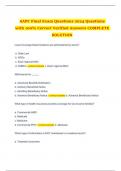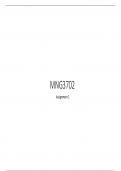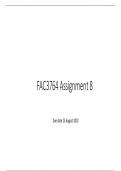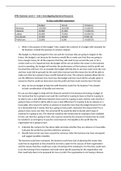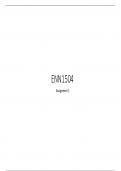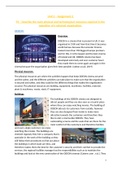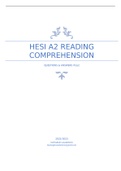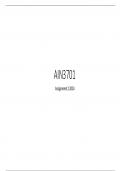OF BODY SYSTEMS
Chapter 1
[School]
[Course title]
,Table of Contents
Skeleton................................................................................................................................................................................. 2
Skeletal Musculature.............................................................................................................................................................4
Musculoskeletal Macrostructure and Microstructure.......................................................................................................4
Sliding-Filament Theory of Muscular Contraction.............................................................................................................9
Activation of Muscles..........................................................................................................................................................10
Muscle fiber Types..............................................................................................................................................................12
Motor recruitment patterns................................................................................................................................................13
Proprioception.................................................................................................................................................................... 14
Muscle spindles................................................................................................................................................................... 14
Golgi Tendon Organs...........................................................................................................................................................15
Heart................................................................................................................................................................................... 16
Valves.............................................................................................................................................................................. 16
Conduction system..........................................................................................................................................................17
Electrocardiogram...........................................................................................................................................................17
Blood Vessels....................................................................................................................................................................... 19
Arteries............................................................................................................................................................................ 19
Capillaries........................................................................................................................................................................ 19
Veins................................................................................................................................................................................ 19
Blood................................................................................................................................................................................... 19
Exchange of air.................................................................................................................................................................... 20
Exchange of Respiratory Gases............................................................................................................................................21
, MUSCULOSKELETAL SYSTEM
Bones, joints, muscles and tendons
Skeleton
Muscles:
o Do not act directly to exert force
o Function by pulling against bones that rotate about joints, transmitting force to the environment
o Can only pull, not push
o Through system of bony levers, pulling forces can be manifested to a “push” or “pull”
Bones:
o Approx. 206 bones in the body
o Provides leverage, support and protection
o Axial Skeleton:
1. Skull (cranium)
2. Vertebral column (C1-Coccyx)
3. Ribs
4. Sternum
o Appendicular Skeleton:
1. Shoulder (pectoral) girdle (left+right Scapula and clavicle)
2. Bones of the arms, Wrists and hands (Humorous, Radius, Ulnar, Carpals, Metacarpals,
Phalanges)
3. Pelvic girdle (Coxal/ innominate bones)
4. Bones of the Legs, ankles and feet (Femur, Patella, Tibia, Fibula, Tarsals, Metatarsals, Phalanges)
Joints:
o Junctions of bones
o Types of Joints:
1. Fibrous Joints = Virtually no movement (sutures of the skull)
2. Cartilaginous joints = Limited movement (intervertebral joints)
3. Synovial Joints = considerable movement (Elbow and Knee)
o Spots + Movement = generally at synovial joints, low friction and high range of motion
o Structure of a joint:
1. Hyaline cartilage, covers articulating bone ends
2. Synovial fluid, Encapsulates the joint
3. Ligaments + Cartilage, supporting structures
o Joint axis of rotation:
1. Unilateral = operate as hinges, rotate about one axis
2. Biaxial = allows movement about two perpendicular axes
3. Multiaxial = allow movement about multiples axes (ball-and-socket)
o Vertebral column:
1. Cervical = 7 (C1-C7)
2. Thoracic = 12 (T1-T12)
3. Lumbar = 5 (L1-L5)
4. Sacral = 5 (S1-S5)
5. Coccygeal = 3-5


